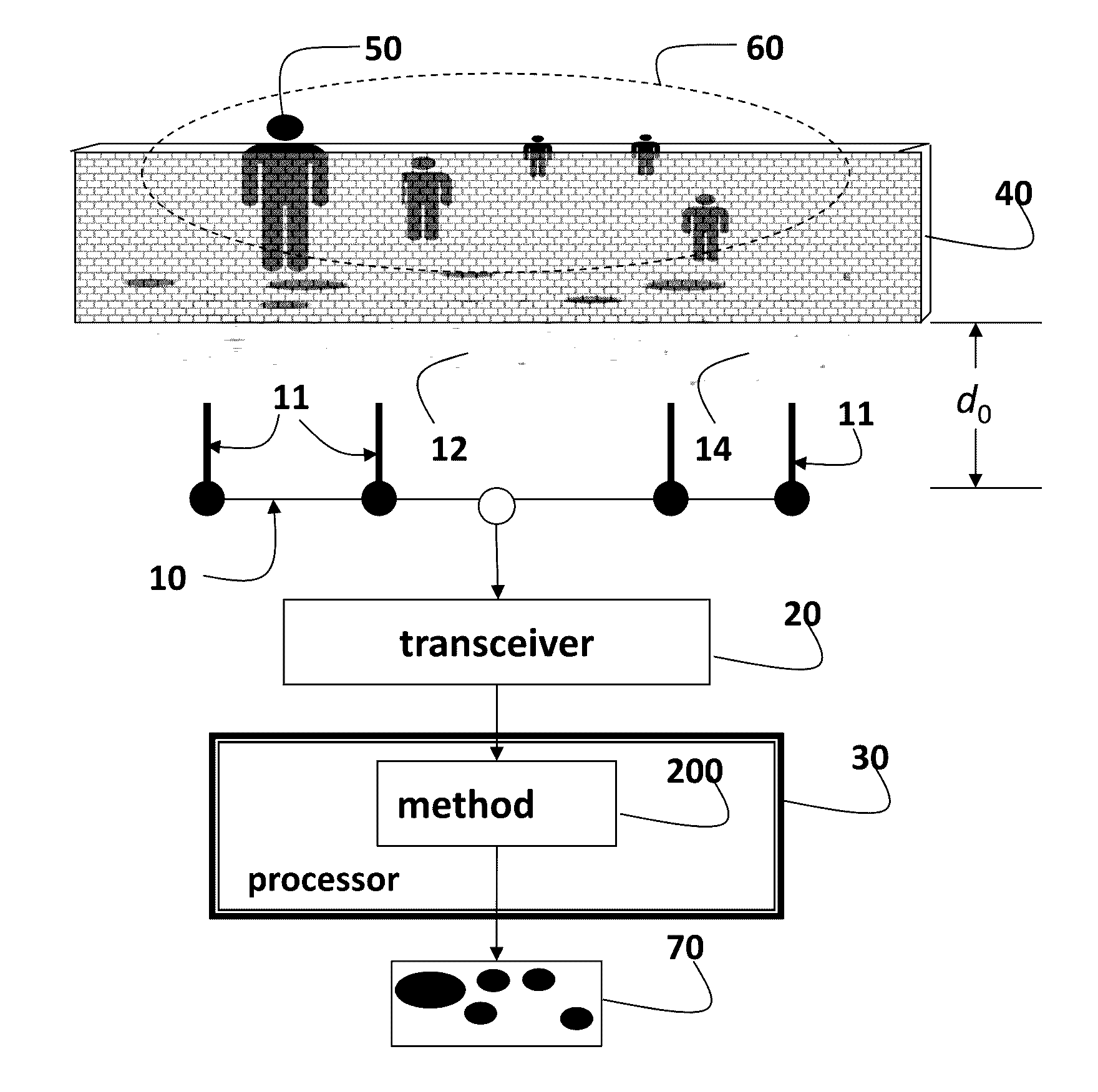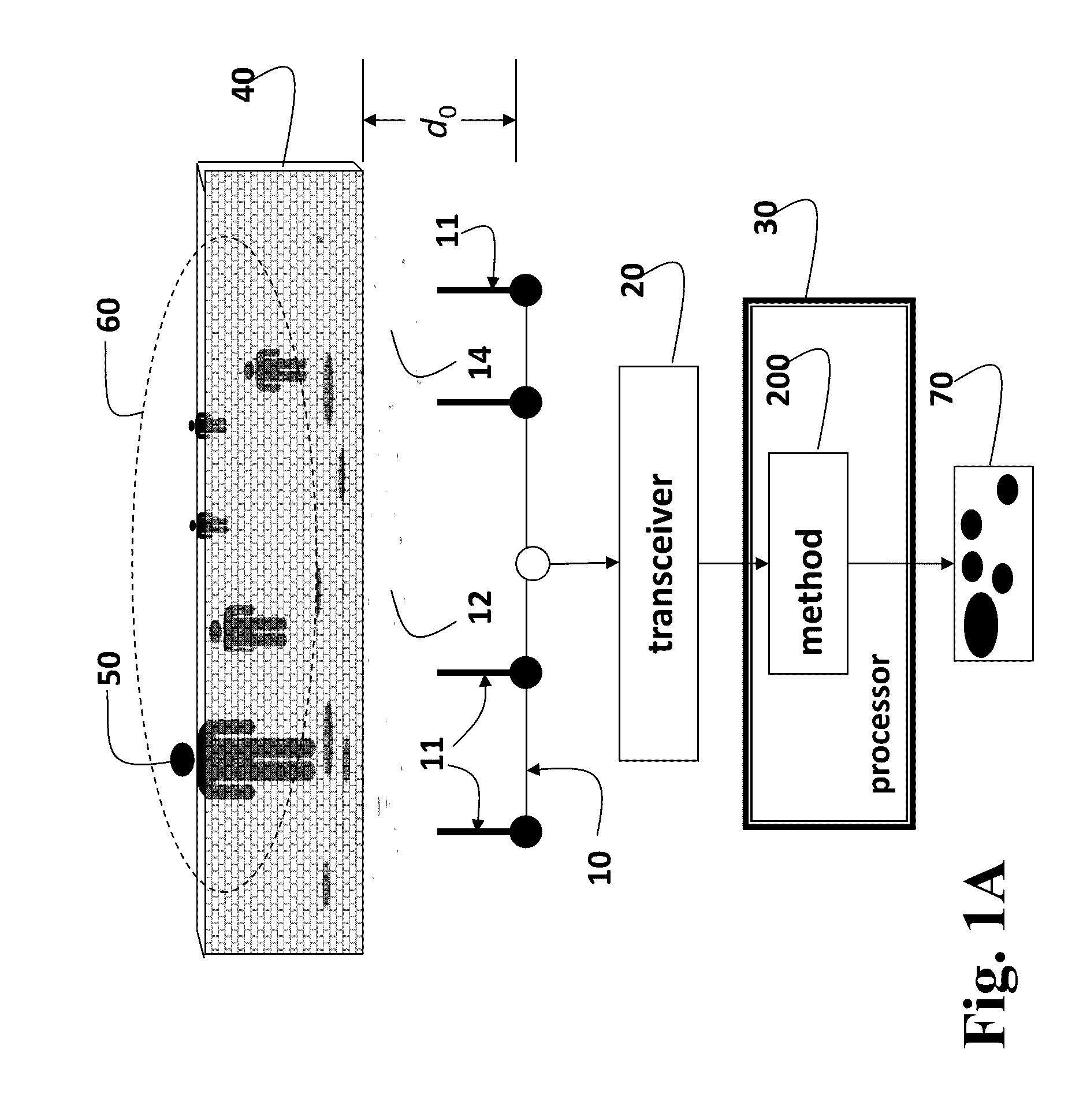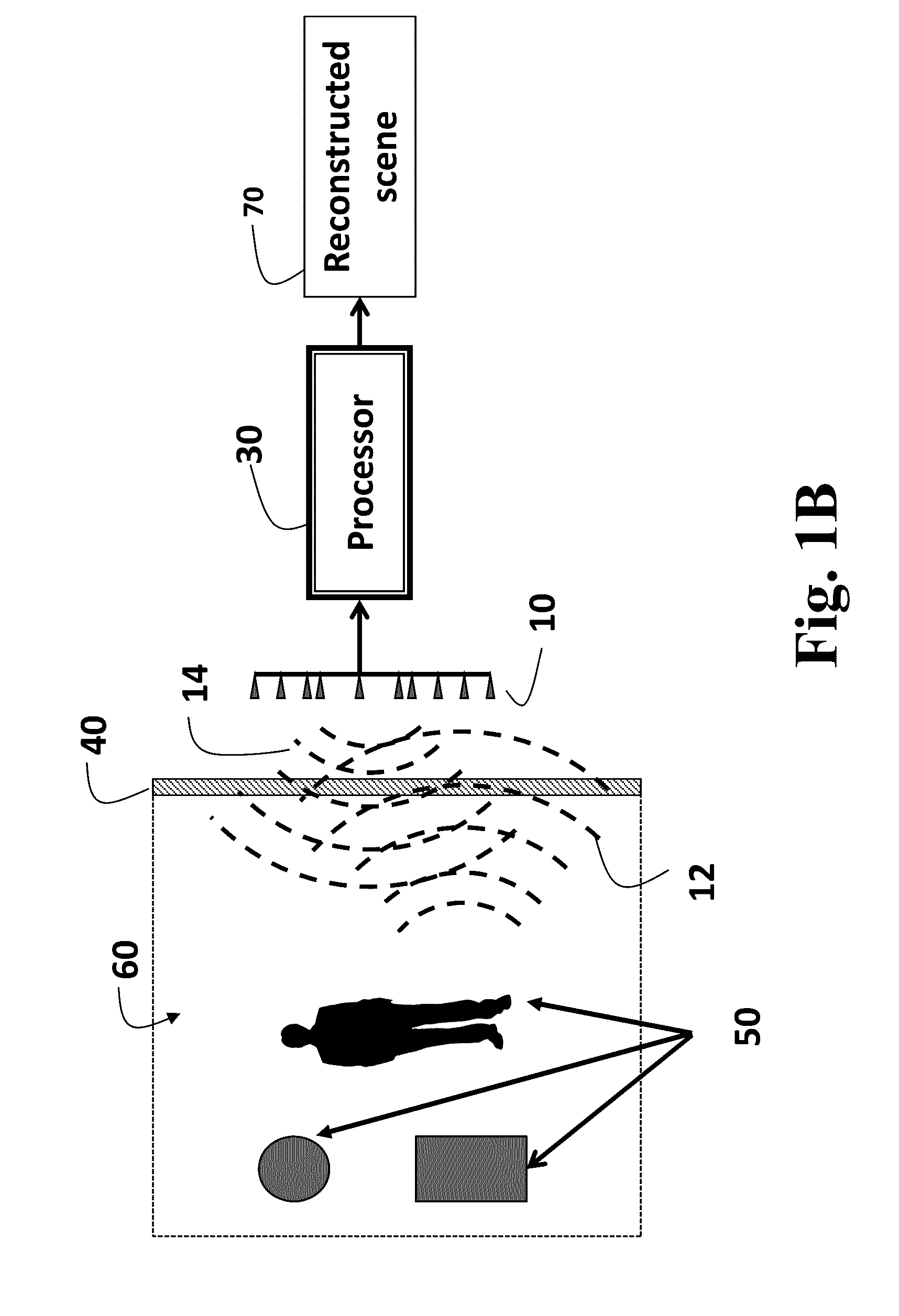Method and System for Through-the-Wall Radar Imaging
- Summary
- Abstract
- Description
- Claims
- Application Information
AI Technical Summary
Benefits of technology
Problems solved by technology
Method used
Image
Examples
Embodiment Construction
[0026]System Setup
[0027]As shown in FIGS. 1A and 1B embodiments of our invention provide a system method and system for through-the-wall imaging (TWI) of objects 50 that do not require any prior knowledge of scene geometry. The method can reconstruct a scene 60 behind a wall 40.
[0028]The system includes an antenna array 10, transceiver 20, and processor 30. The transceiver can tranmit and receive radar pulses. The antenna comprises a set of one or more antenna elements 11. The antenna elements can either transmit or receive as controlled by the processor. The transceiver transmits one or more pulses 14 using one or more of the set of antenna elements 11 of the antenna array at a location in front of the wall. The transmitted pulse propagates through the wall 40 and are reflected by the possible objects 50 in a scene 60 behind the wall 40.
[0029]Reflected signals, (impulse responses or set of echoes) 12 corresponding to each pulse, are received by one or more antenna elements of the a...
PUM
 Login to View More
Login to View More Abstract
Description
Claims
Application Information
 Login to View More
Login to View More - R&D
- Intellectual Property
- Life Sciences
- Materials
- Tech Scout
- Unparalleled Data Quality
- Higher Quality Content
- 60% Fewer Hallucinations
Browse by: Latest US Patents, China's latest patents, Technical Efficacy Thesaurus, Application Domain, Technology Topic, Popular Technical Reports.
© 2025 PatSnap. All rights reserved.Legal|Privacy policy|Modern Slavery Act Transparency Statement|Sitemap|About US| Contact US: help@patsnap.com



